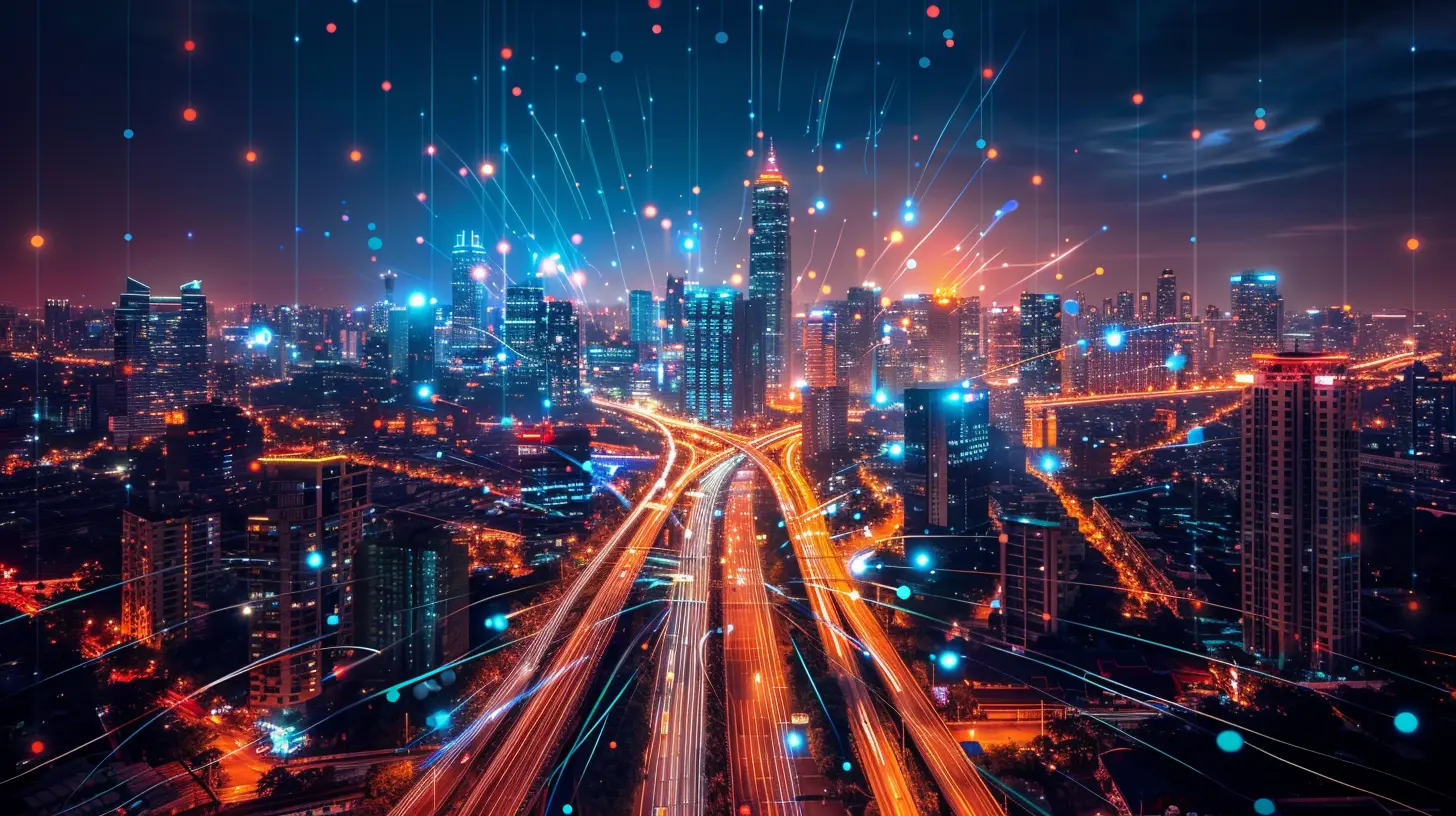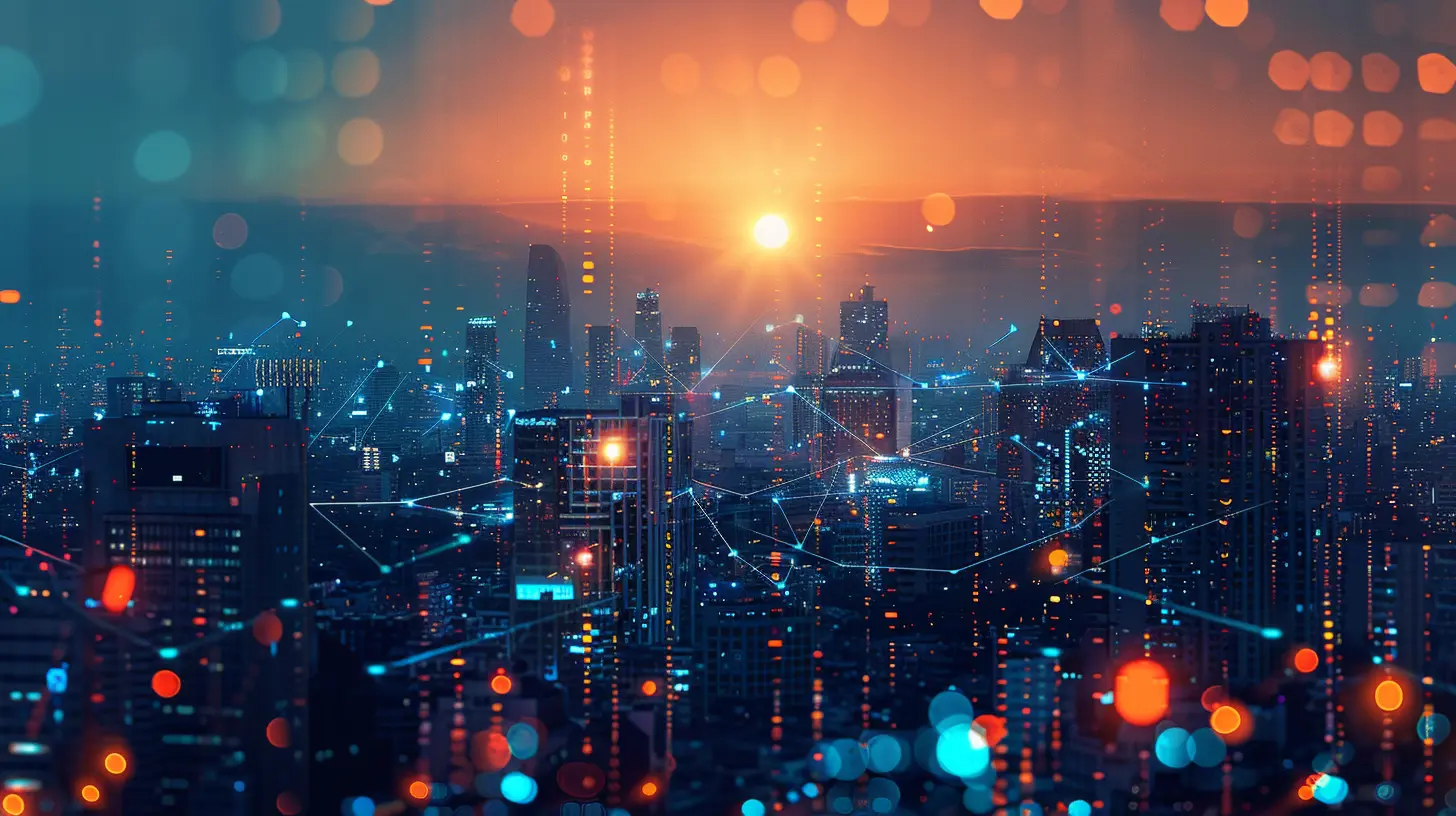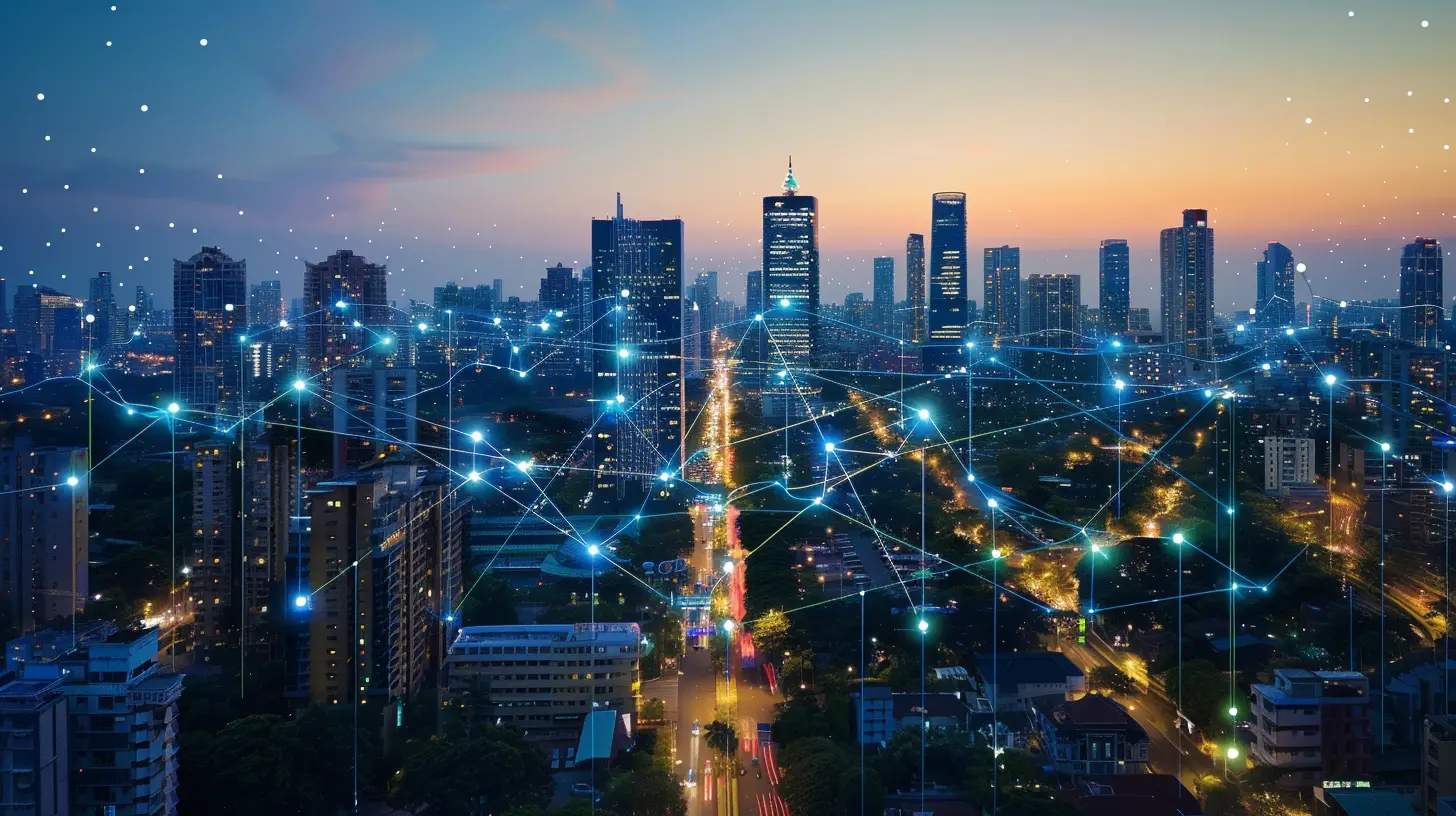How Data Analytics is Shaping the Future of Smart Cities
4 May 2025
The world is changing at an unprecedented pace, and one of the biggest drivers of this transformation is data. From the way we shop to the way we travel, data analytics is playing a crucial role in making our lives more efficient, convenient, and sustainable. But perhaps nowhere is this impact more profound than in the rise of smart cities.
Smart cities are no longer just a futuristic vision; they’re becoming a reality right before our eyes. And at the heart of this revolution? Data analytics.
But how exactly is data analytics shaping the future of smart cities? Let’s dive in. 
What is a Smart City?
Before we get into the nitty-gritty of data analytics, let's first define what a smart city actually is.Simply put, a smart city uses technology and data-driven insights to improve the quality of life for its citizens. This means everything from reducing traffic congestion and enhancing public services to improving air quality and making energy use more efficient.
Think of it as a city that thinks for itself—constantly analyzing data, making decisions, and optimizing its operations in real time.
Imagine a city where streetlights automatically dim when no one’s around, garbage bins notify waste management when they’re full, and traffic lights adjust dynamically to prevent bottlenecks. That’s not science fiction—that’s the power of data analytics in action. 
The Role of Data Analytics in Smart Cities
Data analytics acts as the brain of a smart city. It gathers, processes, and interprets vast amounts of data from various sources—IoT sensors, surveillance cameras, GPS systems, and public utilities, just to name a few.This data is then used to enhance efficiency, reduce costs, improve safety, and make better decisions. Let’s break down some of the most impactful ways data analytics is shaping smart cities.
1. Traffic Management & Smart Transportation
If you’ve ever been stuck in bumper-to-bumper traffic, you know how frustrating and time-consuming it can be. Data analytics is solving this problem by optimizing transportation systems like never before.Smart cities use real-time traffic data, AI-driven monitoring systems, and predictive analytics to adjust traffic lights, reroute vehicles, and even provide commuters with alternative routes.
For example, cities like Singapore and Barcelona have implemented smart traffic management systems that use real-time data to prevent congestion and reduce travel times.
Moreover, ride-sharing services like Uber and Lyft rely heavily on data analytics to match drivers with passengers, optimize routes, and reduce idle time—ultimately making urban mobility more efficient.
2. Public Safety & Crime Prevention
Safety is one of the biggest concerns in any city. Fortunately, data analytics is empowering law enforcement agencies to combat crime more effectively than ever before.By analyzing crime patterns, police departments can predict high-risk areas and allocate resources more efficiently. AI-driven surveillance cameras equipped with facial recognition technology can detect suspicious activities in real time, helping law enforcement respond faster to emergencies.
For example, New York City’s CompStat system uses crime data analytics to identify trends, track criminal activities, and improve policing strategies—resulting in a significant reduction in crime rates.
In smart cities, technology isn’t just about convenience; it’s also about keeping people safe.
3. Waste Management & Sustainability
Ever wondered why trash bins in some cities overflow while others remain nearly empty? Traditional waste collection methods often follow rigid schedules, but data analytics is changing that.Smart cities use IoT-enabled waste bins that notify waste management services when they’re full. This means garbage trucks only collect waste when necessary, reducing unnecessary trips, lowering fuel consumption, and cutting down on emissions.
Additionally, by analyzing consumption patterns, cities can promote better recycling initiatives and waste reduction strategies, leading to a more sustainable environment.
Cities like San Francisco have successfully leveraged data analytics to improve recycling rates, reduce landfill waste, and minimize carbon footprints.
4. Energy Efficiency & Smart Grids
Electricity demand is skyrocketing, and inefficient energy use is a massive challenge for many cities. But with data analytics, cities can optimize their energy usage and reduce waste.Smart grids analyze real-time electricity consumption and adjust power distribution accordingly. If a particular area of the city is consuming more power than usual, energy providers can redistribute resources to balance supply and demand.
For instance, Amsterdam’s smart grid system uses AI-driven data analytics to improve energy efficiency, reduce power outages, and integrate renewable energy sources like solar and wind.
By making energy use more intelligent, cities can cut costs, lower emissions, and provide more reliable power to residents.
5. Healthcare & Emergency Services
Data analytics is also playing a crucial role in healthcare and emergency response systems.Smart cities equip ambulances with real-time GPS tracking to ensure they always take the fastest route in an emergency. Hospitals use predictive analytics to forecast patient influx, allowing them to allocate staff and resources efficiently.
During the COVID-19 pandemic, data analytics helped cities monitor infection rates, predict outbreaks, and allocate vaccines more effectively.
By leveraging data, smart cities are making healthcare more accessible, responsive, and efficient for citizens.
6. Environmental Monitoring & Air Quality Improvement
Air pollution is a major health hazard, especially in urban areas. Smart cities use sensor-enabled data analytics systems to monitor air quality levels in real time.If pollution levels rise beyond safe limits, cities can issue alerts, impose traffic restrictions, and take preventive measures to protect public health.
For example, London’s Breathe London project uses real-time air quality sensors to analyze pollution patterns and implement measures to reduce emissions and improve air quality.
With data analytics, cities can make the air cleaner and safer for everyone.
7. Smart Housing & Infrastructure
Data analytics is also transforming how we build and manage infrastructure.Smart homes use AI-driven energy management systems to optimize electricity use, reducing energy bills while lowering environmental impact.
Additionally, cities use predictive maintenance on infrastructure—meaning sensors on bridges, roads, and buildings detect wear and tear before structural failures occur.
This preemptive approach ensures safer living conditions while saving governments millions in unexpected repair costs. 
The Challenges of Implementing Data Analytics in Smart Cities
While the benefits of data analytics in smart cities are immense, there are still some challenges that need to be addressed:- Privacy concerns – With so much data being collected, how do we ensure citizens' privacy isn't compromised?
- Cybersecurity threats – Smart cities are vulnerable to cyberattacks. How can we protect critical infrastructure from hacking attempts?
- High costs – Implementing data-driven solutions requires significant investment. Are governments and city planners ready for the financial commitment?
- Data accuracy – If the data collected is flawed or biased, how can we ensure that decisions based on this data are reliable?
These challenges need to be tackled through strong cybersecurity measures, ethical data policies, and transparent governance to ensure that smart cities benefit everyone. 
Conclusion
There’s no denying it—data analytics is revolutionizing the way cities function. From efficient traffic management and smart energy grids to improved public safety and environmental sustainability, data-driven insights are making urban living smarter, safer, and more sustainable.As technology continues to evolve, smart cities will become even more connected, efficient, and responsive to the needs of their citizens. The future isn’t just about city planning—it’s about data-driven decision-making that improves lives.
And the best part? This is just the beginning.
all images in this post were generated using AI tools
Category:
Data AnalyticsAuthor:

Jerry Graham
Discussion
rate this article
6 comments
Kova Forbes
This article brilliantly highlights the transformative power of data analytics in creating smarter, more sustainable cities. Exciting possibilities lie ahead!
May 16, 2025 at 7:02 PM

Jerry Graham
Thank you for your insightful comment! I'm glad you found the article inspiring. The future of smart cities indeed looks promising with data analytics at the helm!
Stephanie Benton
Data analytics is revolutionizing smart cities, enhancing decision-making, improving infrastructure, and driving sustainable urban development for the future.
May 16, 2025 at 3:09 AM

Jerry Graham
Thank you for your insightful comment! Data analytics indeed plays a crucial role in optimizing urban living and promoting sustainability in smart cities.
Isaac McIlroy
Exciting insights! Data analytics truly transforms urban living.
May 15, 2025 at 12:22 PM

Jerry Graham
Thank you! I'm glad you found the insights exciting. Data analytics indeed plays a crucial role in enhancing urban living.
Galina McLain
Absolutely loved this article! It’s amazing to see how data analytics is transforming urban living and making smart cities more efficient and vibrant. The future looks bright with innovative solutions that enhance our quality of life. Can't wait to see what’s next! 🚀✨
May 10, 2025 at 4:44 AM

Jerry Graham
Thank you for your enthusiastic feedback! I'm glad you enjoyed the article and share the excitement for the future of smart cities! 🚀✨
Rune McLaughlin
Data analytics isn't just shaping smart cities; it's turning them into urban playgrounds for the tech-savvy. Get ready to embrace your city’s digital glow-up!
May 5, 2025 at 8:05 PM

Jerry Graham
Absolutely! Data analytics is revolutionizing urban living, making cities more interactive and engaging for everyone. Exciting times ahead!
Giselle Wilson
In data's embrace, cities awaken, Smart dreams unfurl as insights awaken. With each byte, a vision ignites, Crafting futures where tech and life unite.
May 5, 2025 at 4:39 AM

Jerry Graham
Thank you for capturing the essence of data's transformative power in shaping vibrant, interconnected cities!




